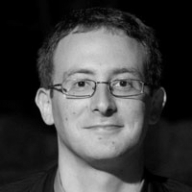First degree in Computer Science at the Technion.
Ph.D. in Computer Science (direct path) at the Technion.
Post-doc at the faculty of mathematics and Computer Science at Weizmann institute.
Post-doc research in the Computer Security and Industrial Cryptography (COSIC) at the Department of Electrical Engineering (ESAT) of the Katholieke Universiteit Leuven, Belgium.
Post-doc research in the Cryptography Research Group in the Departement d’Informatique of Ecole Normale Superieure, Paris, France.
Orr won the Krill Prize (along with yet another graduate of the excellence program – Nathan Keller) in 2014.
Participated in the Technion Excellence Program: 1997 – 2000.
Orr was accepted into the program at the age of 17. He started taking advance courses in the second semester of his studies. This led to joining a research group at the end of the second semester of his studies, along with publishing a research paper at the summer of 1998.
Following his research, he continued doing M.Sc. (and then Ph.D. in the direct path) with Prof. Biham, which was the lecturer at the advanced course (and the head of the research group).
Among his research projects are: security analysis of block ciphers (like Serpent), new cryptanalytic techniques (rectangle attack, combined attacks), and analysis of stream ciphers (like the GSM stream cipher A5/1).
“During the last class of the advanced course, Prof. Biham entered the class and told us that the US government has just declassified a cipher which was classified until that moment. We started working on the cipher, using the techniques which we explored during the course.
We then published a short report on the findings, and after further research, we have published a research paper in the “Selected Areas in Cryptography 1998″ workshop.
The project that we were asked to submit at the end of the advance course was analysis of one of the candidates to the AES competition (the US national institute of standards and technology was at the time at the beginning of a selection process for the next generation encryption algorithm). My project was then presented in the AES workshop held in Rome in 1999.
After that, I’ve started working along with Prof. Biham on a cipher which is used in the GSM system – A5/1. After a very long research, our results have been published in the Indocrypt 2000 conference (and by then I’ve been Prof. Biham’s masters student).”
Recommendations to the students enrolled in the program and to future candidates:
For students – take a deep breath, and look for stuff that interests you.
You have the possibilities to pursue topics that interest you without too much formal requirements (no perquisites) and relatively ease of mind from the financial side.
For prospective students – take a deep breath. The competition is fierce, but you can even learn a lot during the process itself.
Today (2018): Orr is an associate prof. at the computer science dept. at the University of Haifa.

